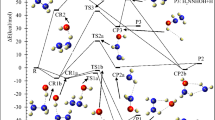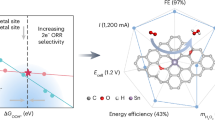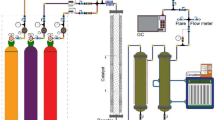Abstract
THERE has been much discussion concerning the reaction responsible for the initiation of chains, in the thermal reaction between hydrogen and oxygen, in the non-explosive region between the second and third explosion limits1. In their early work2, Lewis and von Elbe favoured the thermal dissociation of hydrogen, but in a later paper3 they reject this view because their value of the overall activation energy is "of the order of only 100 K-cals" which they regard as the sum of the activation energies of the chain-initiating and chain-propagating steps, and hence conclude that the energy of activation of the initiating reaction is less than 100 kcal. This value excludes the dissociation of hydrogen (and, of course, oxygen, but the thermal dissociation of this molecule is not considered for valid kinetical reasons) as the chain-initiating reaction, and to meet these conditions, these authors postulate the dissociation of hydrogen peroxide according to H2O2 ↠H2O + O or 2OH, without being very precise about the origin of the hydrogen peroxide, other than assuming that the reaction H2+ O2 ↠H2O2 may play a part initially. Recently, Willbourn and Hinshelwood4 have made a fresh experimental study of the third limit and the slow reaction at lower pressures and, in contrast to Lewis and von Elbe, conclude that the initiation reaction is probably H2 + M ↠2H + M.
This is a preview of subscription content, access via your institution
Access options
Subscribe to this journal
Receive 51 print issues and online access
$199.00 per year
only $3.90 per issue
Buy this article
- Purchase on SpringerLink
- Instant access to full article PDF
Prices may be subject to local taxes which are calculated during checkout
Similar content being viewed by others
References
The explosion limits are here numbered in order of increasing pressure. See also refs. 3 and 4 where the same convention is used.
Lewis and von Elbe, "Combustion, Flames and Explosions of Gases", 39 (Cambridge, 1938).
Lewis and von Elbe, J. Chem. Phys., 10, 376 (1942).
Willbourn and Hinshelwood, Proc. Roy. Soc., A, 185, 353 (1946).
For elaboration of this, see Dainton, Trans. Farad. Soc., 38, 227 (1942).
Assuming the value of Q for H2O2 of 255.7 kcal. mole1 given by Skinner, Trans. Farad. Soc., 41, 645 (1945), and Dwyer and Oldenberg's value of 100 kcal. for the bond energy in the OH radical (J. Chem. Phys., 12, 351 (1944).
Author information
Authors and Affiliations
Rights and permissions
About this article
Cite this article
ASHMORE, P., DAINTON, F. Chain-initiating Process in the Reaction between Hydrogen and Oxygen between the Second and Third Explosion Limits. Nature 158, 416 (1946). https://doi.org/10.1038/158416b0
Issue date:
DOI: https://doi.org/10.1038/158416b0



